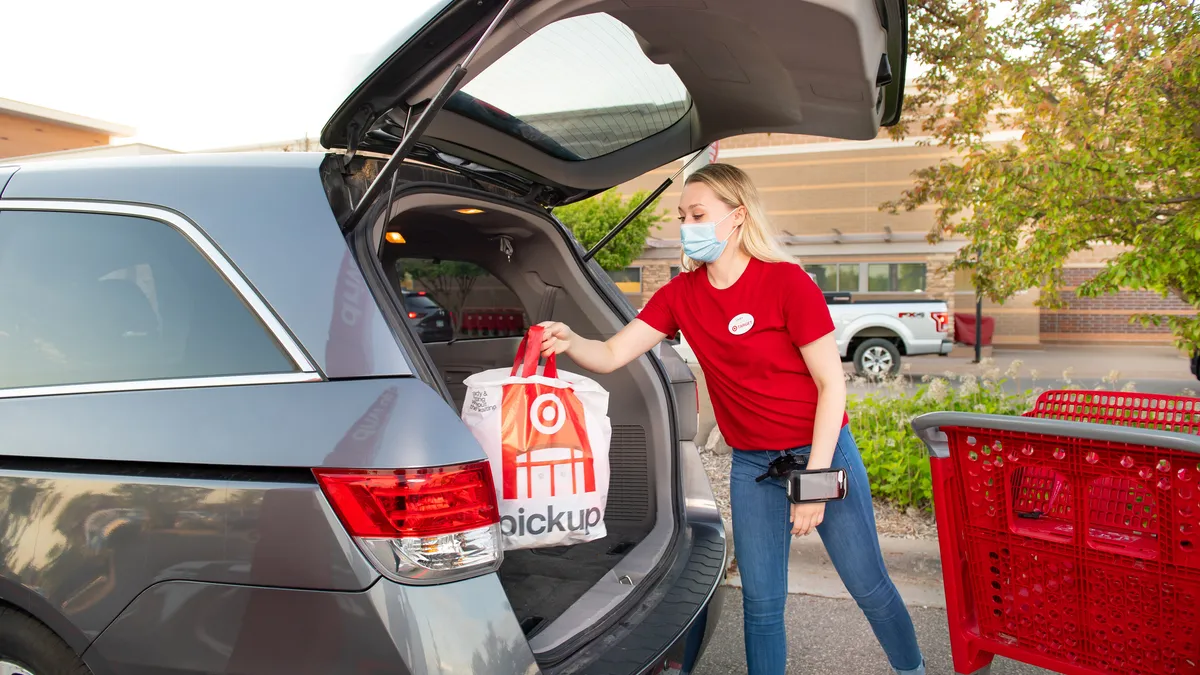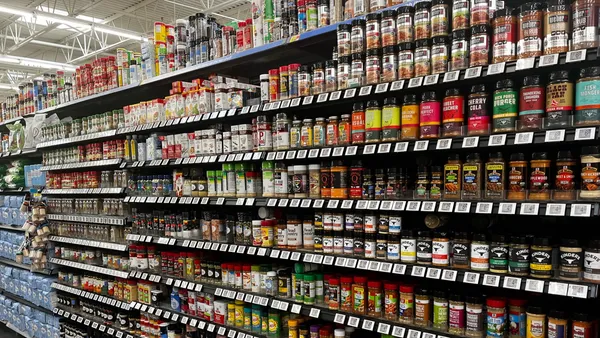Dive Brief:
- Pickup is growing in popularity among U.S. grocery e-commerce customers, with 75% of respondents to a recent survey conducted by e-commerce provider Mercatus reporting that the channel is their preferred way to get online orders placed with food retailers.
- Costs associated with delivery are the primary reason shoppers prefer in-store or curbside pickup when placing online grocery orders, according to the survey results, which were released Wednesday.
- Customers are showing a preference for pickup even as grocers invest in facilities designed to automate fulfillment and improve their ability to efficiently transport goods to consumers.
Dive Insight:
The findings suggest that even as people return to in-store shopping following last year's lockdowns, pickup services are growing in popularity.
Sixty-one percent of the more than 40,000 participants in the survey, which was conducted in July, said they had tried curbside pickup during the past year, up from 57% in 2020. By comparison, the proportion of respondents who said they had given home delivery a try remained even, at 46%.
While the survey indicated that interest in trying delivery has stagnated, it also showed that when shoppers do opt to place an order for groceries using that fulfillment method, they are most likely to use a third-party platform.
Thirty-four percent of respondents said they used Instacart for their most recent grocery delivery order, with another 22% indicating they used Amazon or Amazon Fresh. By comparison, just 24% said they used a delivery service provided by the grocer itself.
Still, survey participants indicated they would much rather direct their business to large retailers like Target and Walmart than services like Instacart when shopping online for groceries. Fifty-six percent indicated they preferred placing e-commerce orders with mass merchants, while 11% pointed to marketplaces like Instacart — a 40% decrease compared with 2020.
Food retailers are continuing to invest in delivery capabilities even as many customers say they prefer pickup, with many placing emphasis on speed. Kroger, The Giant Company and Stop & Shop have all launched 30-minute delivery services in partnership with Instacart in recent weeks, and Gopuff continues to expand its high-speed delivery network. Meanwhile, startups like 1520, Jokr and Fridge No More are stepping up their efforts to provide customers in New York City with grocery delivery in 15 minutes or less.
Earlier this week, Grocery Outlet, which had long resisted e-commerce as it sought to highlight its in-store shopping experience, launched a six-month test of delivery at some of its stores.
Regardless of their fulfillment choices, people who participated in the survey made clear they prefer to use mobile apps rather than websites when interacting online with food retailers. According to the research from Mercatus, people look at more than four times as many products using grocery apps as they do on websites.
Incisiv, a consumer research firm that worked with Mercatus on the survey, said it expects online sales to hit 11.1% of overall grocery revenue in the United States in 2022 en route to a 20.5% share of the market in five years.
Grocery delivery and pickup services generated sales of $6.4 billion in September, down slightly from $6.6 billion in August, according to data from Brick Meets Click and Mercatus.













